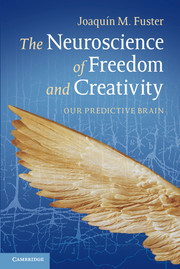2 - Evolutionary roots of freedom
Published online by Cambridge University Press: 05 June 2014
Summary
To give up the illusion that sees in it an immaterial “substance” is not to deny the existence of the soul, but on the contrary to begin to recognize the complexity, the richness, the unfathomable profundity of the genetic and cultural heritage and of the personal experience, conscious or otherwise, which together constitute this being of ours: the unique and irrefutable witness to itself.
Jacques MonodIt is virtually impossible to discuss the cerebral foundation of liberty without dealing with the evolution of the brain. The reason is simple: The capacity of mammalian organisms to modify their environment by choice and to adapt to it by chosen means has grown enormously with the evolutionary growth of certain parts of their brain, the cerebral cortex in particular. Most relevant to our present discourse is the cortex of the frontal lobes. It is indeed a remarkable fact with a touch of cosmic irony that the science of evolutionary neurobiology, which can only “postdict” but not predict, has unveiled in the prefrontal cortex of man the seed of his future, the capacity to predict and to turn prediction into action that will impact on that future and on that of human society.
The prefrontal cortex is the vanguard of evolution in the nervous system. Yet it is one of the latest cerebral structures to develop, in evolution as in the individual brain (Preuss et al., 2004; Rilling, 2006; Schoenemann et al., 2005; Sowell et al., 2003). Language and prediction, the two most distinctively human functions that the prefrontal cortex supports, are anchored in the history of the species, as is the structure of the prefrontal cortex itself. In the human brain, the latter is tied to its evolutionary past and to the future it anticipates. Thus, while the human brain cannot predict evolution, it can predict the consequences of its actions, with them to predict and shape further actions in a continuous cycle, the perception/action (PA) cycle, which functionally links the organism to its environment.
- Type
- Chapter
- Information
- The Neuroscience of Freedom and CreativityOur Predictive Brain, pp. 28 - 57Publisher: Cambridge University PressPrint publication year: 2013

